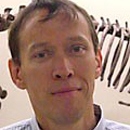Advisory Board and Editors Anatomy & Physiology

Devraj Singh
I am an Biology Assistant Professor at University of Kentucky, Lexington, Kentucky. My current research interest involves investigating neural, genetic and epigenetic mechanism regulating latitudinal cline in critical photoperiodic response, daily clock under different life-history states, and circannual clock properties of geographically distinct dark-eyed junco populations in North America.

Johannie M. Spaan
Dr. Johannie Spaan is a Postdoctoral Fellow at the College of Osteopathic Medicine of the Pacific Northwest (Western University of Health Sciences). Her research interests focus on stress physiology, disease ecology, eco-immunology and parasitology.
More specifically, Dr. Spaan's research within the Steinauer lab is focused on a neglected tropical disease, Schistosomiasis, a helminth infection that affects over 200 million people. Research carried out within the lab focuses on uncovering potential mechanisms that can be manipulated to break the life cycle of this pathogen in order to reduce or eliminate schistosome transmission to humans.
In addition to this, Dr. Spaan is also involved in a project investigating the effect of schistosome infections in a mouse model system and the links among parasite infection, behavioral and cognitive changes, microbiome alteration, and systemic inflammation.

J.g.m. Thewissen
Ingalls-Brown endowed Professor of Anatomy at Northeast Ohio Medical University. Author of 'The Walking Whales.' Associate Editor of PeerJ, the Zoological Journal of the Linnean Society and the Journal of the Palaeontological Society of India. Co-Editor of the 'Encyclopedia of Marine Mammals,' and 'The Bowhead Whale, Balaena mysticetus, Biology and Human Interactions.'

Mahendra Pratap Singh Tomar
Dr. Mahendra Tomar is a Veterinary Professor and Anatomist at the N.T.R. College of Veterinary Science, Gannavaram.
Dr. Tomar works in the field of comparative anatomy of animals, particularly mammals, and his research focuses on macroscopic and microscopic anatomy including the developmental biology of animals. More specifically, his fields of expertise are histology, histochemistry, enzyme histochemistry and forensic animal anatomy.

Jaap H van Dieën
Jaap van Dieën worked as a researcher in physical ergonomics at the Institute for Agricultural Engineering in Wageningen, the Netherlands (1986 to 1996). He obtained a PhD from the Faculty of Human Movement Sciences at the VU University Amsterdam the Netherlands in 1993 and has been affiliated to this faculty since 1996. In 2002, he was appointed as full professor and became head of the department in 2016. Jaap van Dieën leads a research group focusing on the neuromechanics of human movement, with applications in ageing, musculoskeletal and movement disorders and sports. His research focuses on four themes:
1) Balance control: what determines good balance control, how we can assess balance control and fall risk, and how can balance control be improved?
2) Control of trunk posture and movement: how does trunk control change with disorders like low-back pain, and how can changes in trunk control be assessed clinically?
3) Spine mechanics and low-back pain: how can low-back loading be assessed, and how effective are ergonomic interventions in reducing low-back loading?
4) Measurement tools for biomechanical and neurophysiological assessment with a focus on applications outside the lab.
Jaap van Dieën has supervised over 50 PhD students and (co-) authored over 500 papers in international scientific journals. He is currently the editor of the Biomechanics and Control of Human Movement section of Frontiers in Sports and Active Living and serves on several editorial boards.

Jingzhe Wang
Jingzhe Wang received his Ph. D in Cartography and Geographic Information System from Xinjiang University, Urumqi, China, in 2019. He is now working as a research associate at MNR Key Laboratory for Geo-Environmental Monitoring of Great Bay Area, Shenzhen University. His research interests focus on Earth observation and remote sensing, spectral modeling, quantitative estimation of soil properties, digital soil mapping, GIS, spatial analysis, and environmental sustainability. He has published over 60 papers in peer-reviewed international journals in these related research areas and has served as a reviewer for many journals and conferences including Remote Sensing of Environment, Ecological Indicators, Computers and Electronics in Agriculture.

Mathew J Wedel
I am a vertebrate paleontologist, and my main areas of interest are sauropod dinosaurs and the evolution of pneumatic (air-filled) bones in dinosaurs and birds. I'm also interested in the evolution of heads and necks in vertebrates, and in the nervous systems of very large animals. I've been fortunate to coauthor three papers naming new dinosaurs: the sauropods Sauroposeidon (2000) and Brontomerus (2011), and the early horned dinosaur Aquilops (2014). I am currently an Associate Professor at Western University of Health Sciences in Pomona, California, where I teach gross anatomy. In 2016 my book "The Sauropod Dinosaurs: Life in the Age of Giants", with artist and lead author Mark Hallett, was published by Johns Hopkins University Press.
In my spare time I enjoy stargazing, and I write the monthly Binocular Highlights column and the occasional feature article for Sky & Telescope magazine.

Vanessa R Yingling
Dr. Yingling is a professor in the Department of Kinesiology at California State University, East Bay. Her undergraduate degree was in Bioengineering from the University of California-San Diego. She obtained her master’s degree in Exercise Science from the University at Buffalo and her Ph.D. in Kinesiology (Biomechanics) from the University of Waterloo, Ontario, Canada. She trained as a post-doctoral fellow for 2 years in the Department of Orthopaedic Surgery at Washington University School of Medicine in St. Louis. Dr. Yingling’s research interest is “How to grow a strong skeleton - The effect of exercise and loading on bone structure and strength. Her research has been funded by the National Institutes of Health.

Li Zuo
Fellow of the American College of Sports Medicine (FACSM) at The Ohio State University, College of Medicine.

